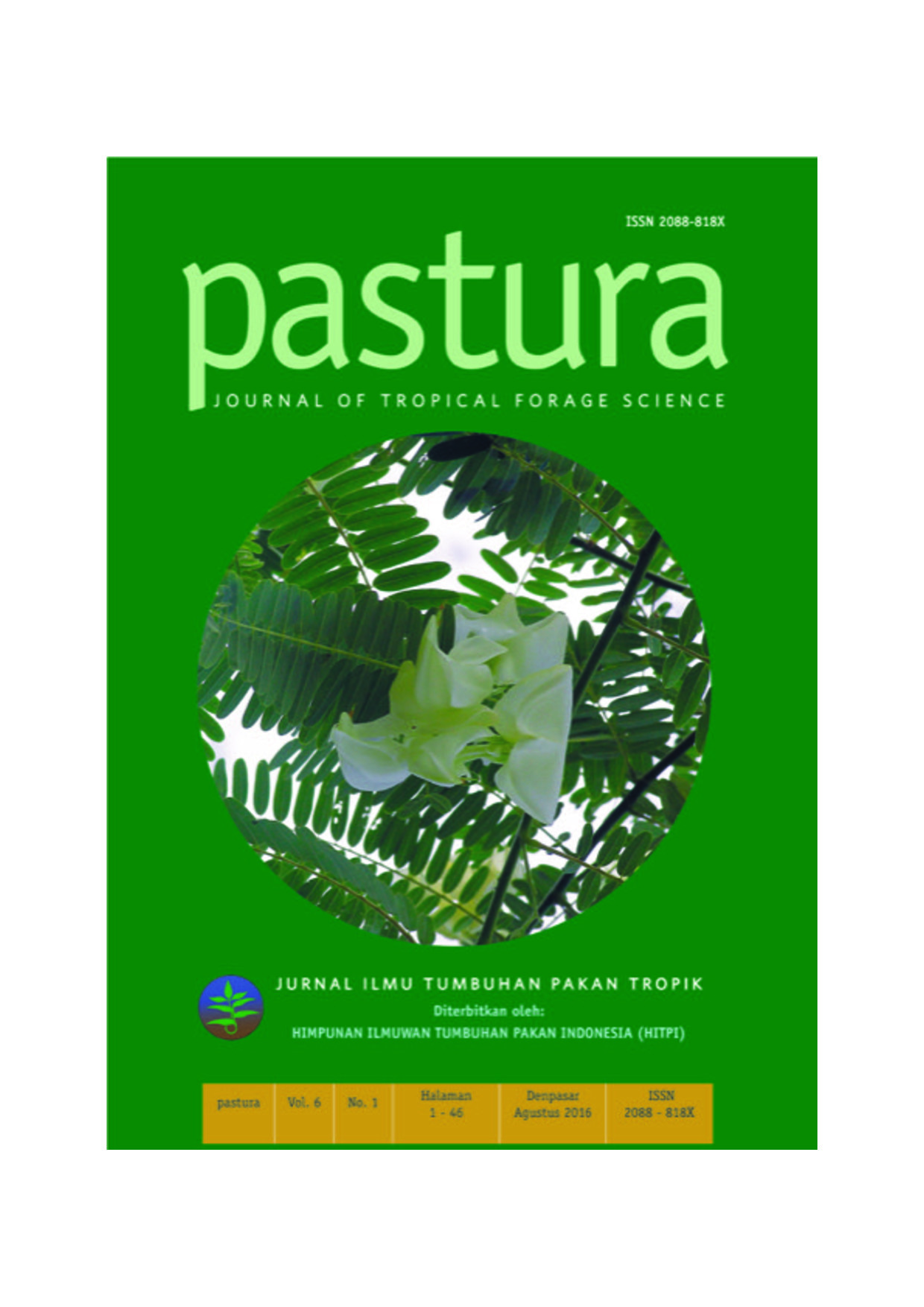PENAMPILAN ALFALFA (Medicago sativa) DEFOLIASI PERTAMA PADA JARAK TANAM DAN UMUR DEFOLIASI YANG BERBEDA
Abstract
Forage, the main feedstuff for ruminants, includes grasses and legumes, browses, and side products of food crops. However, legumes generally have greater crude protein content relative to other species of forage plants. One of the species of legumes is alfalfa (Medicago sativa), a perennial crop that can grow from the tropics up to sub tropics. In spite of its excellent nutrient content, In Indonesia alfalfa is still not widely explored and used for feedstuff. A study was conducted to explore and evaluate of alfalfa performances in terms of the height, number of tillers, dry matter (DM) and crude protein (CP) productions under the effects of different plant densities and ages of defoliation”. The height of the location of study was 200 m above sea level with an average temperature of 270 C. The results showed that the ranges of the height of alfalfa, the numbers of tillers, DM and CP productions were 33.31-56.32 cm, 36.38-82.36 tillers/bunch, 556.9-1018.9 kg/ha/defoliation, and 149.75 – 291.79 kg/ha/defoliation, respectively. In general, the ages of plant at the time of defoliation and plant distances affected (P<0.05) the variables being studied. The older plants resulted in greater DM and CP yields, and more densely plantation resulted in greater DM and CP yields.
Keywords: alfalfa, plant density, defoliation age.





